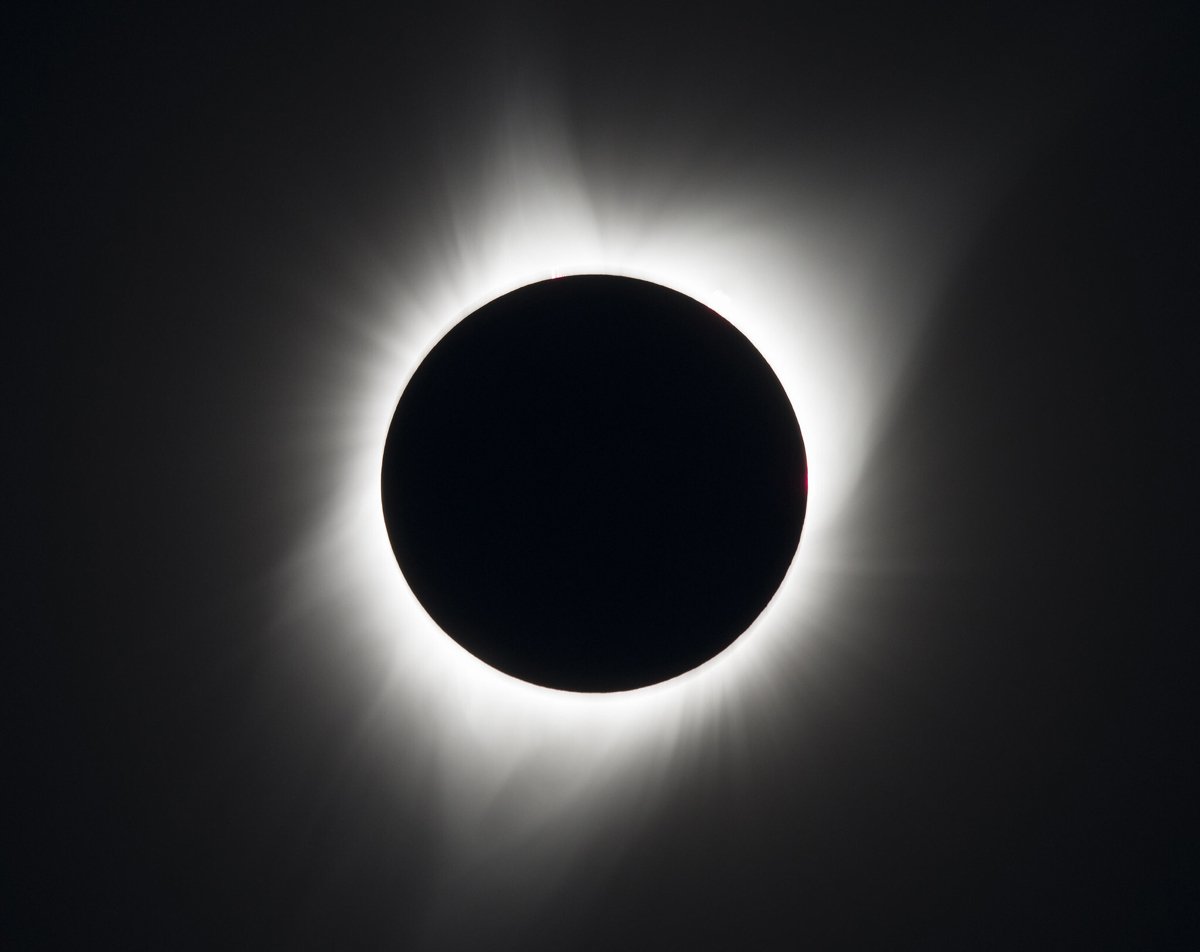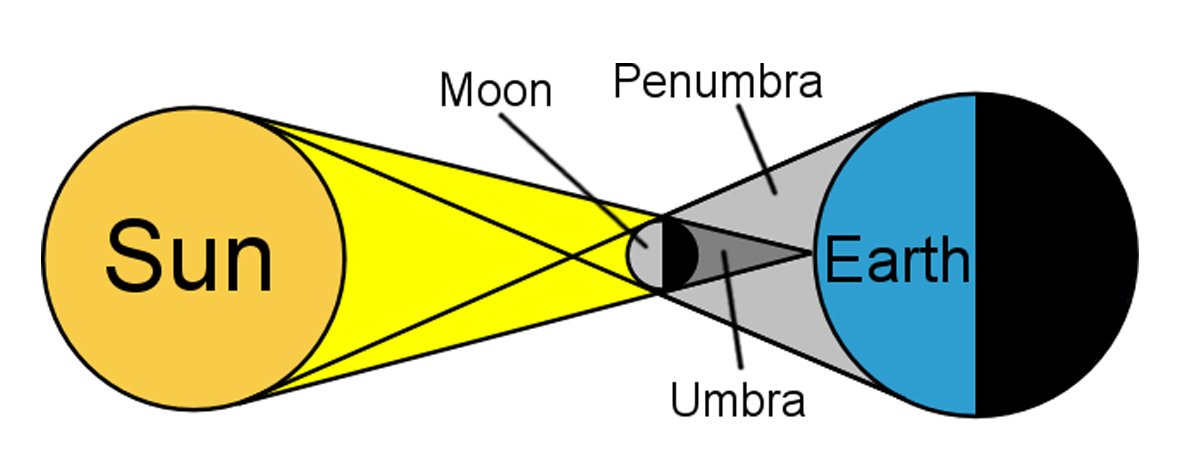
We are publishing this article now because there will be a partial solar eclipse on Thursday 10 June 2021 in this country – read on for details and viewing advice.
A total solar eclipse is one of the most awesome and beautiful sights you can ever hope to see. These phenomena come about because of the happy coincidence that the sun and the moon appear to be the same size in the sky. (This is because, although the sun is about 400 times as far away from us as the moon, it also happens to have a diameter about 400 times larger.)
How eclipses happen
The moon orbits the Earth (about once every month) in roughly the same plane as the Earth orbits the sun. The result of this is that the moon lies somewhere between the Earth and the sun about once every month, at new moon. The planes of the two orbits don’t quite coincide, but nevertheless from time to time the moon will be in just the right position to cast its shadow on the Earth’s surface. When this happens, we get an eclipse.
In any one place on the Earth’s surface, an eclipse can be either total (when the shadow of the moon – the umbra – covers the whole of the sun’s disc) or partial (when only part of the sun’s disc is covered by the moon’s shadow – the penumbra).
As the moon orbits the Earth, and as the Earth rotates under it, the shadow of totality of the moon races along a narrow path (only a few tens of kilometres wide) over a distance of hundreds or thousands of kilometres. Anybody positioned along this narrow path will have the good fortune to see a total solar eclipse.
Totality
If you are located along this path, and as the moon’s umbral shadow approaches, more and more of the sun’s disc will be covered until totality. As totality approaches, the light develops an eerie quality, because it comes from a smaller and smaller area of the sun’s surface. At totality, the temperature drops noticeably. The brighter stars and planets appear in the sky. The sun’s atmosphere (the corona) can be seen as an irregular pearly glow round the moon, which itself seems like a dark hole in the sky. The birds go quiet (because they think it is dusk). Unfortunately, totality lasts for only a few brief minutes before the disc of the sun reappears. However, it is a beautiful time.
Regrettably, total solar eclipses are all too rare. On average, one will occur somewhere on the Earth’s surface about every 18 months. However, because each eclipse can only be seen along a very narrow path, a small country such as Britain must wait at least several decades between total eclipses. The last one was in August 1999, and there won’t be another one here until September 2090.
Partial solar eclipses
Partial solar eclipses cover a much wider area, so are much more common in any one place. These events lack the majesty and the excitement of a total solar eclipse, but are nevertheless worth looking out for. The next one in Britain will be on Thursday 10 June 2021. It will reach its maximum coverage (as seen from Exeter) at about 11.07am BST, when just over 20 per cent of the sun’s surface will be covered. In the hour or so up to this moment, the moon will appear to take an ever- increasing bite out of the sun, followed by an ever-decreasing bite in the hour or so afterwards.
Warning!
One vital warning has to be given. It is ESSENTIAL that you never look directly at the sun, or you could permanently damage your eyes. (The ONLY time it is safe to look towards the sun is during the few minutes of a total solar eclipse when the sun’s disc is completely covered. So this won’t apply in Britain on 10 June.) Some readers may remember that Donald Trump foolishly forgot this advice when he looked at a partial solar eclipse in Washington in 2017. Please don’t follow his example.
Protective glasses can easily be obtained via the Internet. Just Google “solar eclipse protective glasses”, and several options will appear. These glasses cut out over 99 per cent of the sun’s radiation (at all wavelengths), making it safe to view the sun through them. (Always check the glasses first, to make sure they are not damaged in any way.) If you don’t manage to get protective glasses, you could try projecting an image of the sun on to a piece of white paper using a kitchen colander (with sufficiently small holes) – but again, DO NOT be tempted to sneak a look at the sun itself.
The next total solar eclipse
For anyone whose appetite is whetted by this event, the next total solar eclipse within a reasonable distance of Britain will be on 12 August 2026, when the path of totality will cross Spain. As a result of Brexit, we now have self-imposed limits and, potentially, extra bureaucratic obstacles to our visits to mainland Europe. However, provided we are not actually at war with the EU by then, people in this country should seize the opportunity to view it.
Happy viewing!





